Tracking the right user engagement metrics is crucial for your website's success. If you want to improve your ranking and traffic, here are 9 metrics you shouldn't miss.
User engagement metrics is a popular term in digital marketing.
Whenever you hear a digital marketing expert talk about digital marketing metrics, one of the things they’ll stress strongly is the need to keep your site visitors engaged.
Indeed, it’s likely that you’ve read and been old about multiple ways to improve visitor engagement. Tactics such as improving your site load times, ensuring user-friendly navigation, creating great content, and interacting with your visitors come to mind.
But, there’s something rarely talked about, which is just as important as knowing how to increase user engagement – understanding your engagement level.
Before you can talk about low or high engagement rates, you need to understand ways in measuring user engagement. Before embarking on a campaign to raise your engagement rate, you must know where the numbers stand.
This is what we want to discuss today – defining customer engagement metrics with numbers and statistics for an improved marketing campaign.
Benefits of Measuring User Engagement

First, though, it’s important to understand the importance of defining engagement with hard numbers. User engagement metrics are vital for four key reasons;
- Learn what you’re doing well: Metrics help you determine areas where you’re excelling. Perhaps your listicles (list articles) are driving the most traffic. Or maybe it’s the long-form posts. Only through close monitoring and measurement can you find out.
- Find out what’s not working: No digital marketing campaign is perfect. As some areas excel, others will likely be pulling you back, i.e., losing your traffic. Again, only through proactive tracking and measurement can you uncover and fix these areas.
- Find new profit opportunities: Great digital marketers build great marketing campaigns. But the best ones consistently find room to grow. Engagement measurement is one of the strategies that can reveal new profitable opportunities within the business.
- User Engagement metrics for A/B testing: A/B testing is a user experience research methodology that webmasters use to solve visitor pain points and boost website conversions. You can use engagement metrics to split-test some of your web pages or specific elements within a single web page.
9 User Engagement Metrics to Prioritize for Business Success
There are dozens of ways you should know on how to increase user engagement at any given time. The following are the top 9 metrics to prioritize;
1. Pageviews
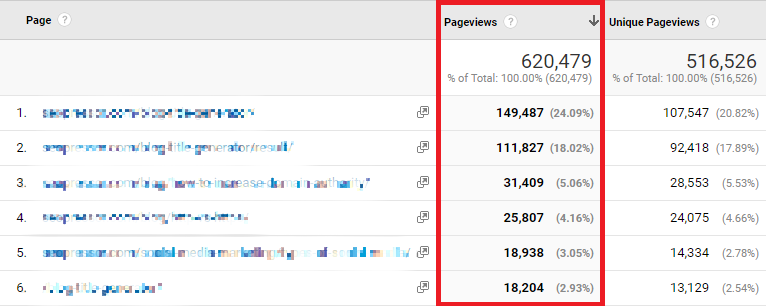
Pageviews are the total number of pages viewed on your site, including repeated views of a single page. Also known as a page hit or page tracking hit, a single page view can also be defined as the instance of a page being loaded (or reloaded) in a browser. Pageviews, therefore, becomes the total number of pages loaded/reloaded.
Pageviews, when used alongside other metrics, indicate the popularity of a specific page or post. More page views mean a more popular page and vice versa.
There are several steps you can take to increase your page views. Providing a good user experience, for instance, will get people coming back to your website. You should also aim to understand the context and intent behind a user’s search.
When you do keyword research, you can easily figure out whether users are simply looking around or are ready to buy. Simply put, when you Google something, you expect relevant results to pop up. This is the same when you’re targeting relevant keywords and creating content.
So, what’s the fastest and best way to deal with this?
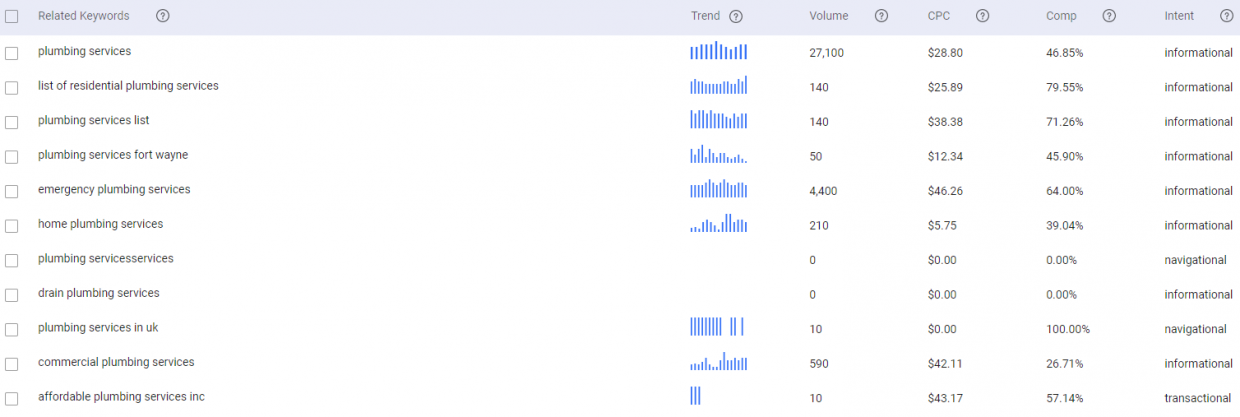
BiQ’s Keyword Intelligence can help you with this. It specifically tells you what’s the intent behind each keyword you’re aiming to target. Enter your target keyword. Its rule-based machine learning algorithm will show you the exact intent along with other important metrics of each keyword.
If you’re not targeting them as part of your SEO efforts, you’re at the risk of losing out on ranks and traffic. Nonetheless, having interesting content that serves the needs of the readers is arguably the biggest tip here.
2. Time On Page

Google defines “time on page” as the number of time users spend viewing a specific page or screen or set of pages or screens. The metric itself is an average, i.e., the total amount of time spent on that page divided by the total number of visits.
“Time on page” primarily tells you how well your content is performing. A higher average time spent on a specific page means the page or post is performing well. Secondly, “time on page” may also reveal false leads. Users who view the page but quickly leave are likely false leads.
Improving the value of your content is the first step to improving the “time on page” metrics. Other tips are making navigation easier and working on content readability.
To get a fast and effective check on readability, you may use BiQ Content Intelligence. Or if you’re interested to get an enterprise-grade assessment of your site’s strengths and weaknesses, BiQ is a reliable tool you can depend on.
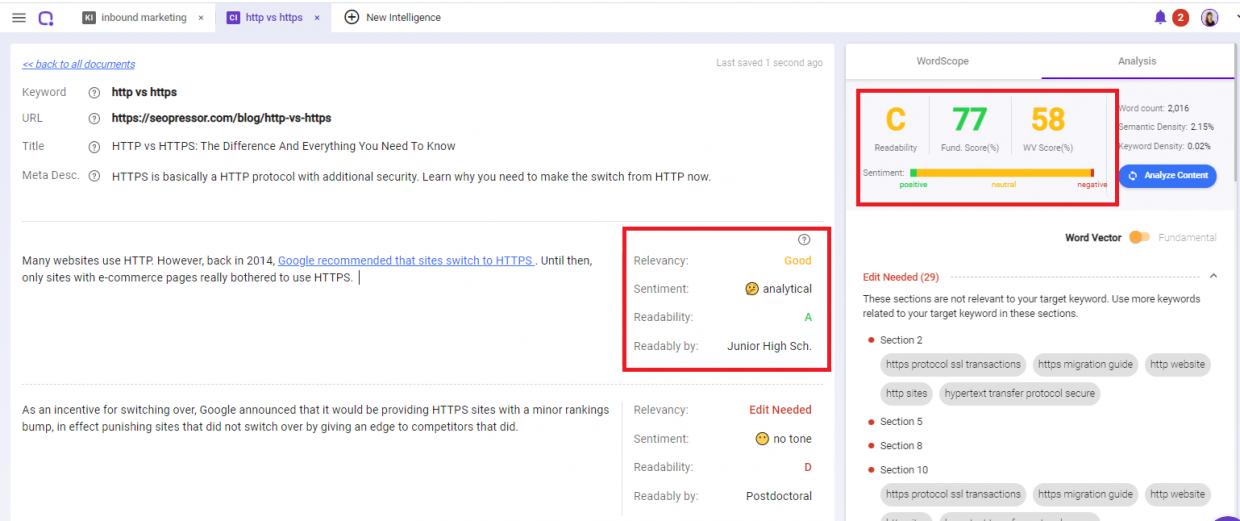
Readability is an important factor that can increase your site’s SEO levels when it comes to online content. It is a practice of making your writing understandable and easy to digest for your readers.
It’s really simple. Just enter your domain, targeted keyword, hit analyze and BiQ will do the rest of the work for you! Get your results in seconds and see which are you should be improving and see your ranks soar!
Besides that, you’ll get to learn about the relevancy value, and types of the sentiment of each and every paragraph. You may want to quickly check out the power of Content Intelligence here: https://biq.cloud/content-intelligence
3. Bounce Rate

A website bounce happens when a user visits your site but leaves without taking any further action. Another way to define it is a visit that ends with a single page visit. The bounce is the ratio of people who bounce off your site relative to the total site traffic, i.e., the number of bounces divided by total traffic over the same period.
A high bounce rate is usually an indication of unmatched expectations. The landing page likely doesn’t satisfy the needs of your visitors.
Steps you can take to minimize your bounce rate include matching content with headlines, having clear calls to action (CTAs), leveraging internal linking, and avoiding annoying pop-ups. Remember that the bounce rate can affect your search engine ranking.
4. Unique Visitors
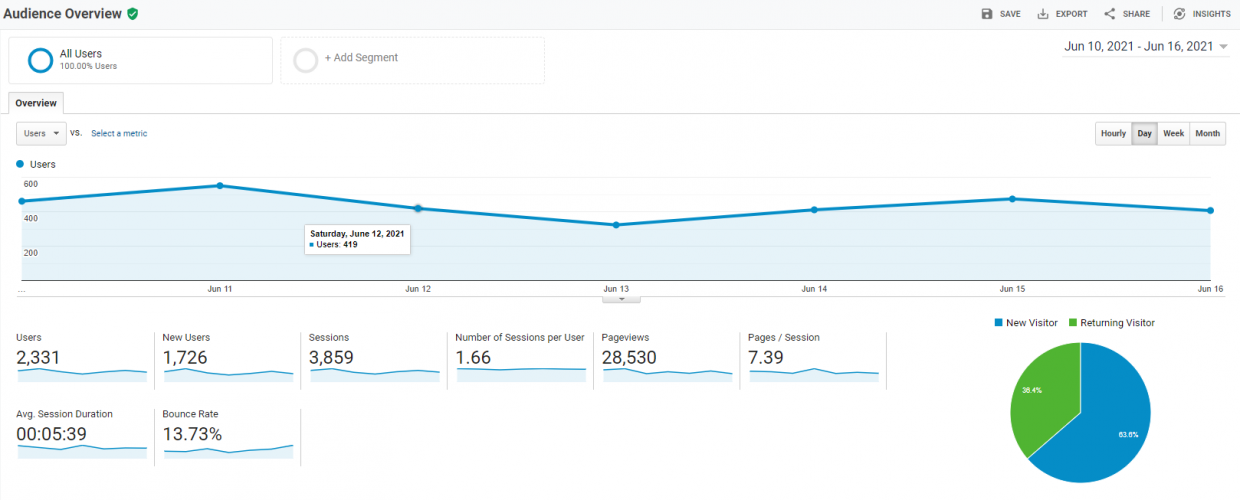
Unique visitors (or unique visits) refers to the number of different people who visit your website over a specified period. It’s different from page views in that page views count all views, including return visits from users who’ve been on your site previously during the reporting period. The unique visitor metric doesn’t count repeat visits.
The metric has two main benefits. First, it provides an accurate picture of the size of the audience you’re reaching. Secondly, it indicates the potential leads and sales, assuming you maintain your conversion rate.
To increase the number of unique visitors on your site, know your target audience, and address the audience’s search intent.
5. New vs. Returning Visitors
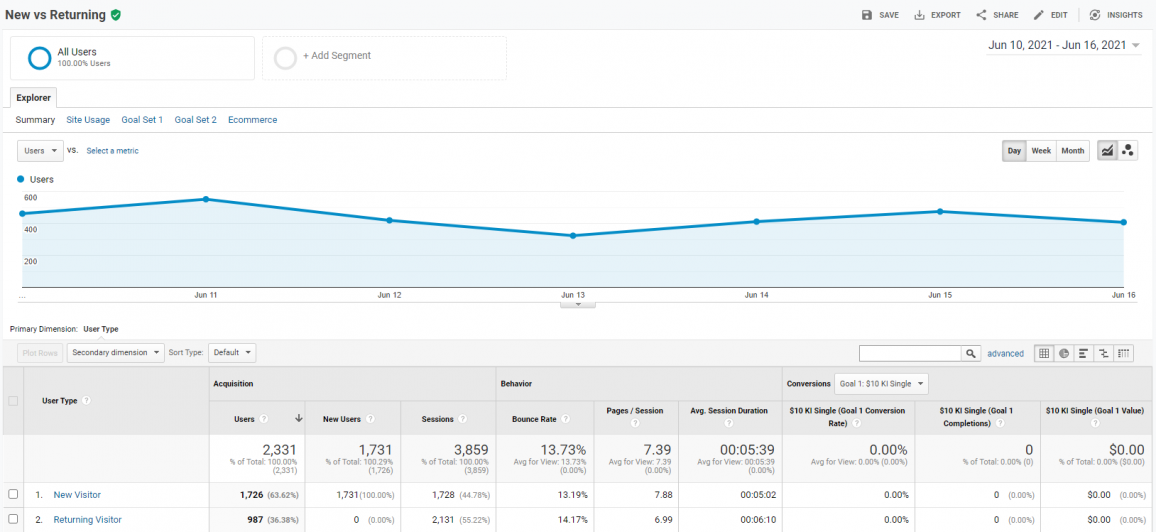
New/unique visitors, as we’ve mentioned, are people visiting your site for the first time over a reporting period. Returning visitors, meanwhile, are people who’ve previously been on the same site/page during the reporting period and are returning for a second, third time, etc.
You need both (new and returning visitors). But, you also want to get the balance right. Many experts consider a 50-50 new vs. returning visitor ratio (over a month) the perfect situation, through the majority stress, even more, the need for return traffic. Ideally, returning visitors should make up at least 30% of all visitors.
Building a loyal audience, publishing fresh content regularly, and continually making improvements to your marketing strategy are a few tips to help you achieve a healthy new-returning visitor ratio.
6. Conversion Rate
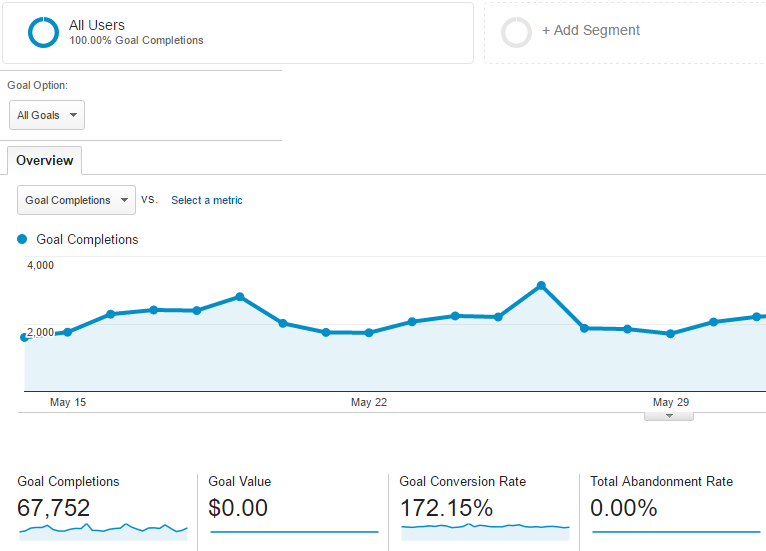
Conversion rate, considered the most crucial metric in marketing by many, is the proportion of site visitors that take the desired action. This “desired action” includes but isn’t limited to making a purchase. Instead, it covers every profitable action as defined by the marketer/business. The conversion rate is expressed as a percentage.
A high conversion rate means your marketing is on point; that your strategies and offers are working. A high conversion rate also guarantees lower acquisition costs, higher revenue per visitor, and, ultimately, faster business growth.
Tips that will help you achieve a higher conversion rate include perfecting your landing pages, writing conversational pieces, and creating urgency. Adding pop-up forms and reviews, displaying social proof, and strengthening your CTAs can also help.
7. Abandonment Rate
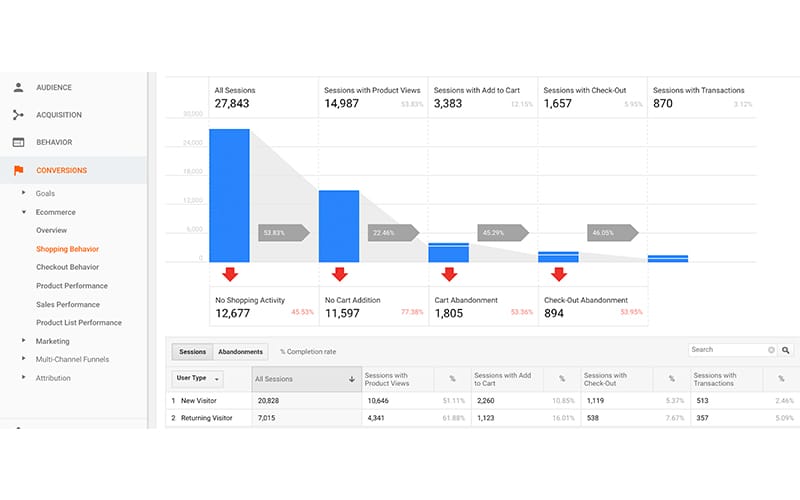
The opposite of conversion is abandonment. Also known as shopping cart abandonment in e-stores, abandonment happens when a customer begins the checkout process but leaves midway through the process.
The abandonment rate is the frequency at which abandonment happens, i.e., the proportion of shoppers who initiate the checkout process but leave midway. It’s expressed as a percentage.
A high abandonment rate is one of the worst headaches for digital marketers, as it means you’re losing money at the last hurdle.
Although abandonment happens everywhere (the average abandonment rate is 67.91%), there are steps you can take to reduce your abandonment numbers.
Exit-intent pop-ups, for example, can help address issues users may have to prevent abandonment. Personalized messaging, goodies such as free shipping, improved checkout pages, and post-abandonment follow-up are other strategies to consider when it comes to increasing your user engagement metrics.
8. Click-Through Rate
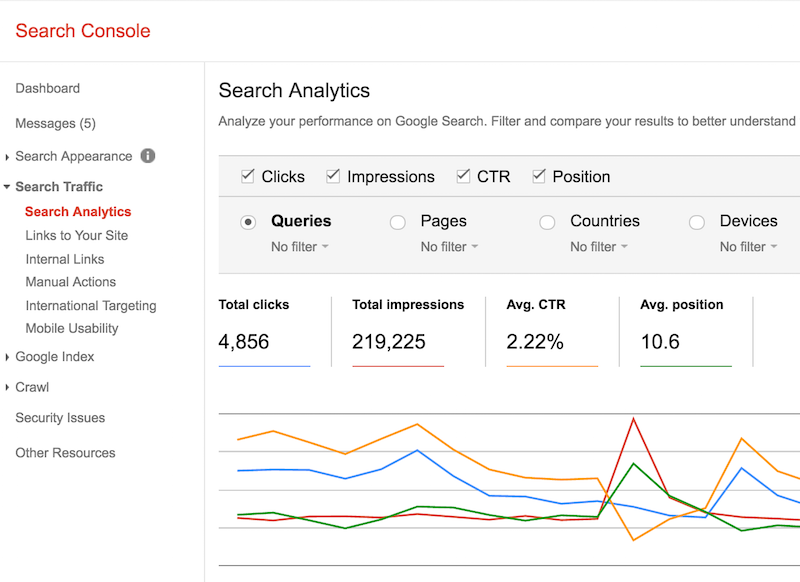
The click-through rate is another vital user engagement metric for your website. Defined as the percentage of visitors who follow a hypertext link to a particular site or page, it indicates the proportion of site visitors who are likely to follow through to conversion.
A high click-through rate is often a sign that your messaging is working. It also means that your forms and CTAs are effective, and visitors like your offers. Otherwise, you need to find ways to improve.
Fortunately, there are multiple steps you can take to increase your click-through rate. Start by creating highly effective CTAs, use stats, and hard numbers to generate more interest, and create urgency with countdown timers. Targeting highly specific keywords and using accurate title tags and meta descriptions also help.
9. Exit Rate

Finally, the exit rate is the number of times visitors leave a website from a specific (single) page. Another way to define it is the frequency at which visitors leave your website from a particular page. It is calculated as the number of views for that specific page divide by the number of exits.
The exit rate helps you determine the overall performance of individual pages or a group of pages on your site. If too many people are leaving from the home page, you need to improve that page. Context is essential, though, since some pages, e.g., the contact page and landing pages, are natural exit points.
Nevertheless, you can always try to reduce the exit rate of each page. Tips to consider include pop-ups that encourage people to stay, optimizing your conversion funnel to maximize stay time, and asking visitors for help.
Time to Ramp-Up Your User Engagement Metrics
Customer engagement is critical to digital marketing success. Without measuring user engagement sufficiently, you’re going nowhere. This makes user engagement and retention metrics fundamental.
Consistently track and measure your page views, average time on page, bounce rate, unique visitors, and all the other vital metrics to have a clear picture of what you’re doing wrong and where you need to improve.




